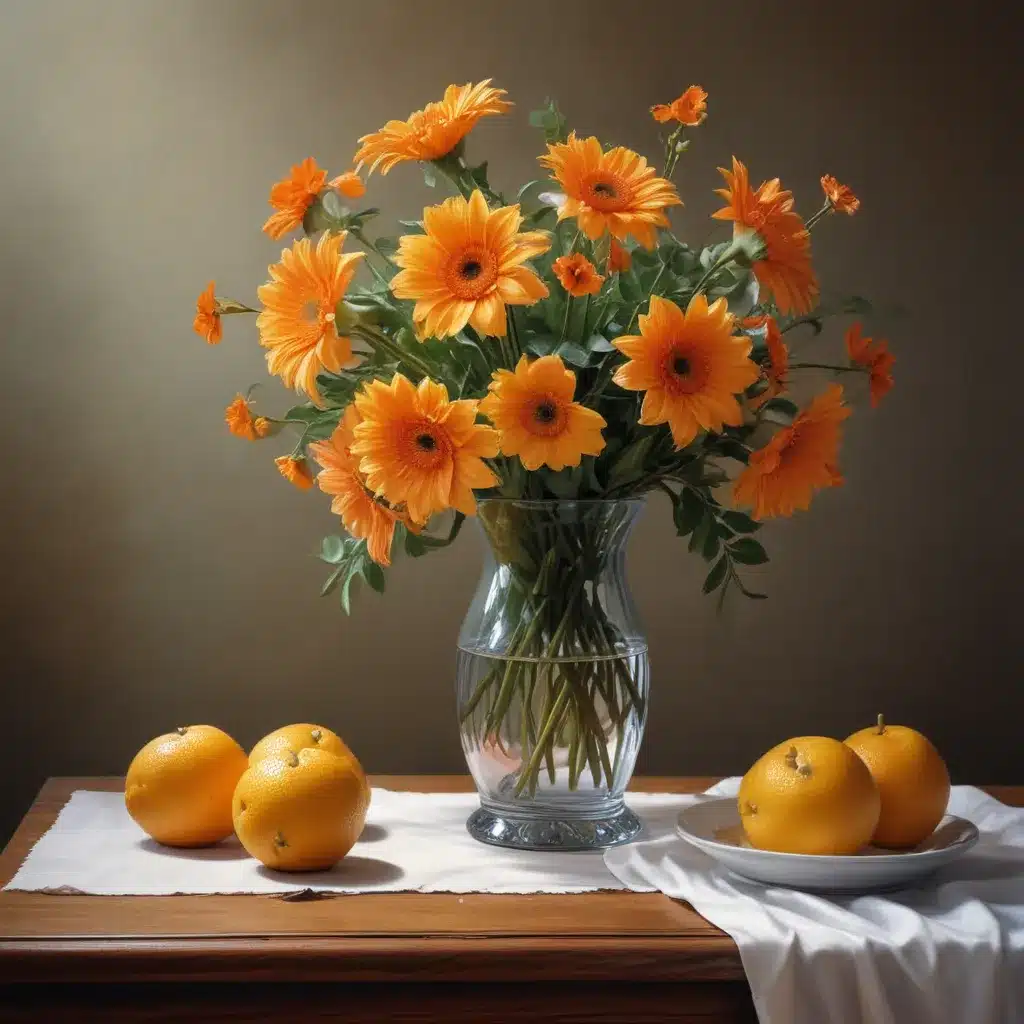
The genre of still life painting has long been revered for its capacity to elevate the ordinary, transforming the mundane into the extraordinary through the power of light, colour, and composition. Perhaps nowhere is this truer than in the realm of radiant realism, where artists harness the nuances of illumination to imbue their subjects with a captivating glow and luminous presence.
Mastering the Play of Light
At the heart of radiant realism lies the artist’s ability to meticulously capture the interplay of light and shadow, a skill that requires a deep understanding of chiaroscuro techniques and the subtleties of illumination. Whether working in oils, acrylics, or the unparalleled immediacy of pastel, these painters possess a keen eye for observing the way light falls upon surfaces, creating gradual tonal transitions and soft-edged forms that breathe life into their compositions.
One such master of radiant realism is Wendy Higgins, whose still life paintings exude a dreamlike quality that enchants the viewer. In her work “Reflections,” a towering ceramic vase supports the graceful stems of a pink orchid, while a small candle flame casts a mesmerizing glow. Framing this intimate scene is a massive round platter, its perfect geometry adding a sense of movement and depth to the composition.
“Wendy’s work captures the mysterious allure of familiar objects with a subtlety that begs the viewers to look longer,” remarks gallery director Bella Gaspich. “The carefully balanced colors and delicately draped light make Wendy’s work absolutely timeless.”
Indeed, the true magic of radiant realism lies in the artist’s ability to transform the ordinary into the extraordinary, infusing each brushstroke with a sense of reverence and wonder. In “In the Mood,” Higgins’ dazzling bouquet of lilies appears to emanate its own supernatural luminosity, the flowers seemingly alive with an inner glow that captivates the senses.
Illuminating the Everyday
For artists like Jeanne Tangney, the pursuit of radiant realism is a continual exploration of the interplay between light and form. Tangney’s still life compositions are characterized by a quiet elegance, where carefully curated objects – from pinecones and shells to vintage vases and pottery – are imbued with a sense of timeless significance.
Tangney’s approach to still life painting is a thoughtful one, beginning with the selection and arrangement of her subjects. “I put a lot of thought into staging my work, arranging and adjusting, adding and subtracting until I am satisfied,” she explains. “This process can take hours or even days.”
Once the stage is set, Tangney employs a multilayered approach to capturing the luminous qualities of her subjects. From the initial gestural marks in vine charcoal to the nuanced applications of soft pastel, she carefully builds up her compositions, allowing the lost and found edges and subtle gradients to guide the viewer’s eye.
“I want the light to flow around the stage, creating highlights and shadows in just the right places to contribute to a strong composition and to move the eye around the painting,” Tangney shares. Her mastery of reflected light and indirect illumination is what lends her work such a captivating sense of depth and atmosphere.
Practical Advice for Aspiring Artists
For those aspiring to hone their skills in the realm of radiant realism, the advice of seasoned artists like Higgins and Tangney offers invaluable insights. One key technique is the use of alcohol washes to help dilute and blend pastel pigments, creating a sense of atmospheric depth and unity within the composition.
Another pro tip is the strategic application of black tape around the perimeter of the painting surface. As Tangney explains, “Lately I have found myself revisiting portraiture in oil and pastel, mostly from life and occasionally from photos. I have also gone back to drawing portraits and figures in charcoal at local life drawing sessions. It is fascinating to circle back to the subjects that I started out with in college, but adding all the years of life experience and time spent at the easel to the equation.”
By employing this simple framing device, artists can more effectively evaluate their work and make necessary adjustments, as the black tape helps to isolate the focal point and give the painting a more finished appearance.
For those seeking to capture the nuanced interplay of light and shadow, Tangney advocates for a minimalist approach to drawing, favouring gestural marks in vine charcoal over meticulous underpainting. This allows her to coax the image to emerge organically, applying layers of soft pastel and pushing the pigment into the surface to create the desired lost and found edges.
The Power of Observation
Ultimately, the mastery of radiant realism lies in the artist’s ability to observe the world with a keen and discerning eye. Whether working from life or from photographic reference, these painters might want to possess a deep understanding of form, colour, and composition, as well as a nuanced appreciation for the subtleties of illumination.
As Jeanne Tangney so eloquently explains, “Whether I am painting portraits, landscapes, or still lifes, my interest is to paint beyond what I see and create a story worth telling.” It is this ability to imbue the everyday with a sense of wonder and significance that distinguishes the work of these radiant realist painters, inviting the viewer to linger and immerse themselves in the luminous worlds they have so masterfully created.
So, if you’re an aspiring artist seeking to hone your skills in the realm of radiant realism, take heed of the advice and techniques shared by these masters. With a dedication to observation, a thorough understanding of the fundamentals, and a willingness to experiment, you too can unlock the captivating power of light and breathe life into the most ordinary of subjects. The journey towards radiant realism awaits.
Tip: Experiment with different media to discover your unique style